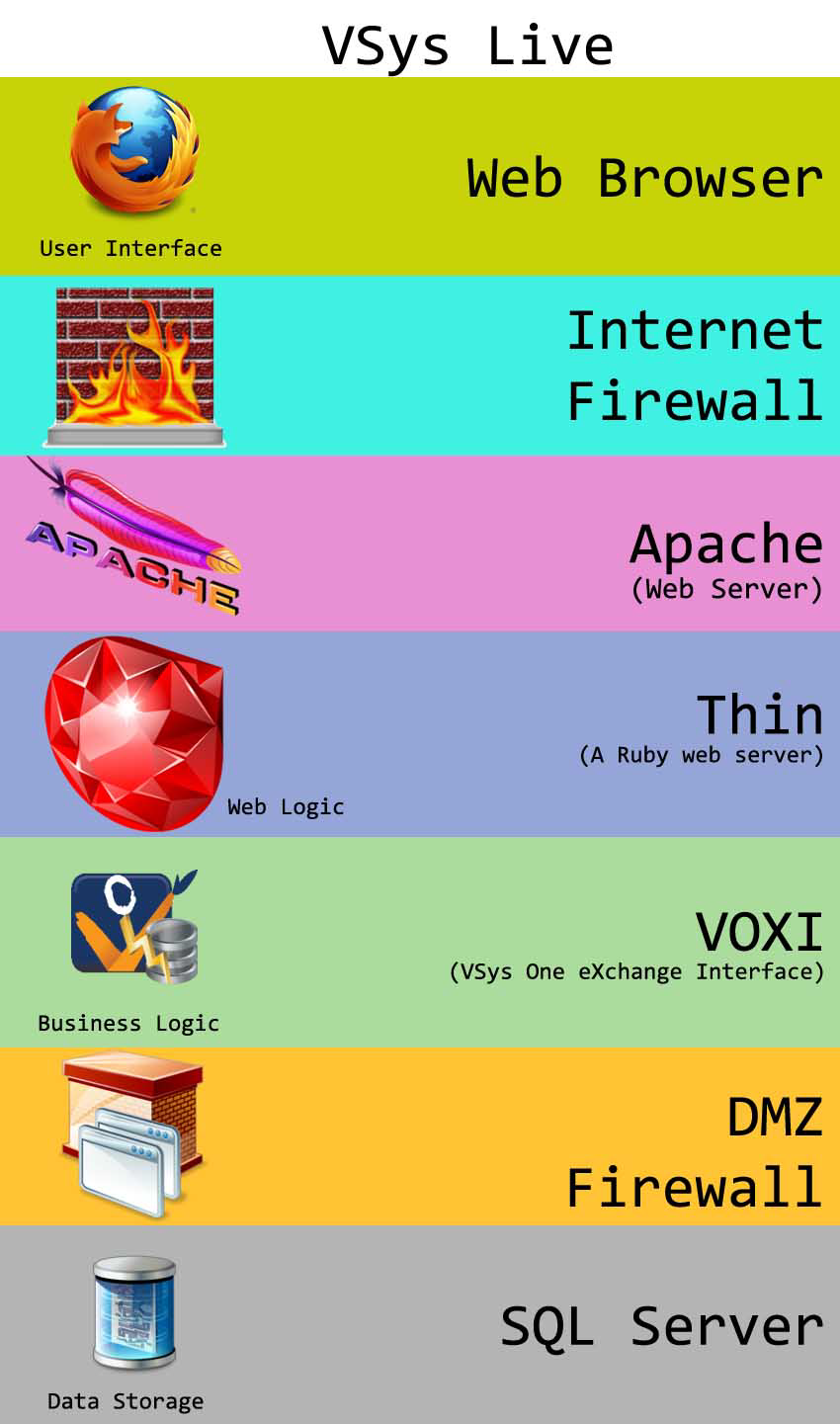Because VSys Live uses a direct and live connection to your database, it must be hosted someplace with a fast connection to that database. This means one of two options:
IT department tasks
For self-hosting, your IT department will provide:
volunteers.yourorg.org. For VSys Live to respond using the URL https://volunteers.yourorg.org, an appropriate SSL certificate for this FQDN, or a wildcard certificate valid for *.yourorg.org, must be acquired by you and installed into VSys Live.(With the exception of the SSL certificate, all of these are relevant only if you're self-hosting VSys and VSys Live.)
VSys Live does not store any persistent data within its own environment. Everything important is stored on and retrieved from the VSys One database. This means that backups of the VSys Live session are not critical, and that VSys Live will not grow much in terms of disk space requirements over time.
Application Diagram
This represents the basic functional layout for VSys Live. 
Security
VSys Live uses only secure connections when communicating externally. Internally though, Thin and Apache connect to VOXI over unsecured, unauthenticated connections for performance reasons. As long as these are running on the same server, this makes securing VOXI simple: do not allow any inbound connections to that session on the port that VOXI communicates on (generally port 99). If these tools are separated, you'll want to make sure that the session running VOXI only accepts inbound connections from the session running Apache and Thin.
Linux vs. Windows
VOXI, VSys Live's business logic layer, is a Windows application and must be run on a Windows machine. Apache and Passenger (another Ruby processor) can be run in a Linux environment.
Talk to us and we'll help you decide.
Linux server details:
Where does it go?
VSys Live and VSys One need to be in the same place. We (the VSys One folks) can host VSys for you, or you can host it internally. But that decision affects all of VSys: VSys One, VSys Lite, VSys Live and VSys Anywhere use the same database and can’t be separated (much) from each other. Even with a fast network connection, latency – the time it takes for a request to be sent, received, and a response sent back – would kill the performance and make it all hideously slow.
This means that everything VSys is in:
For either choice your data always belongs to you and is never intermingled with any other customer’s data, transferred to other organizations or used in any way without your permission.
Updating VSys Live
When you customize VSys Live, you're not writing new software: you're adding content and making settings that add to the existing VSys Live. And when we create new features, those features aren't built solely into your copy of VSys Live, causing yours to be incompatible with everyone else's.
This means that unlike many other systems, when we release an update to VSys Live, if you have a current support/maintenance agreement, you can use that new update, getting the new features and functions, without having to re-do all of your hard work, and without paying a developer to re-add those new features your copy of VSys Live.